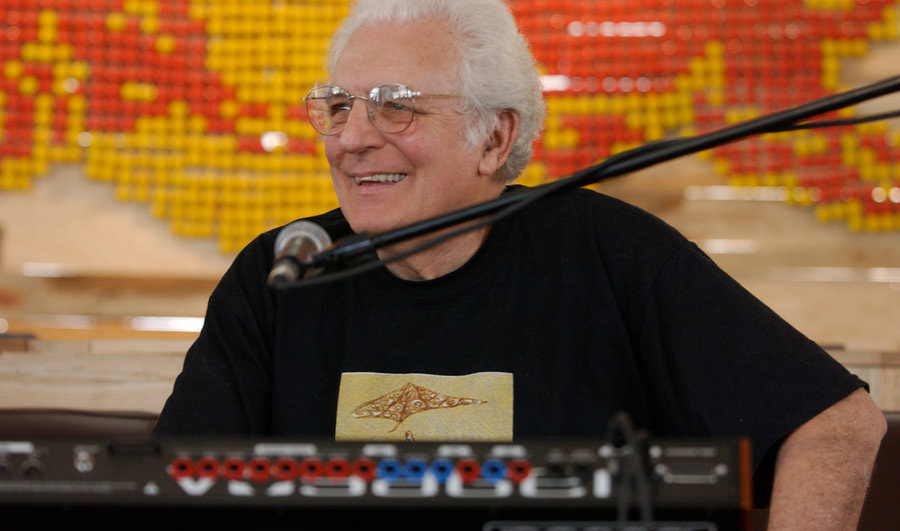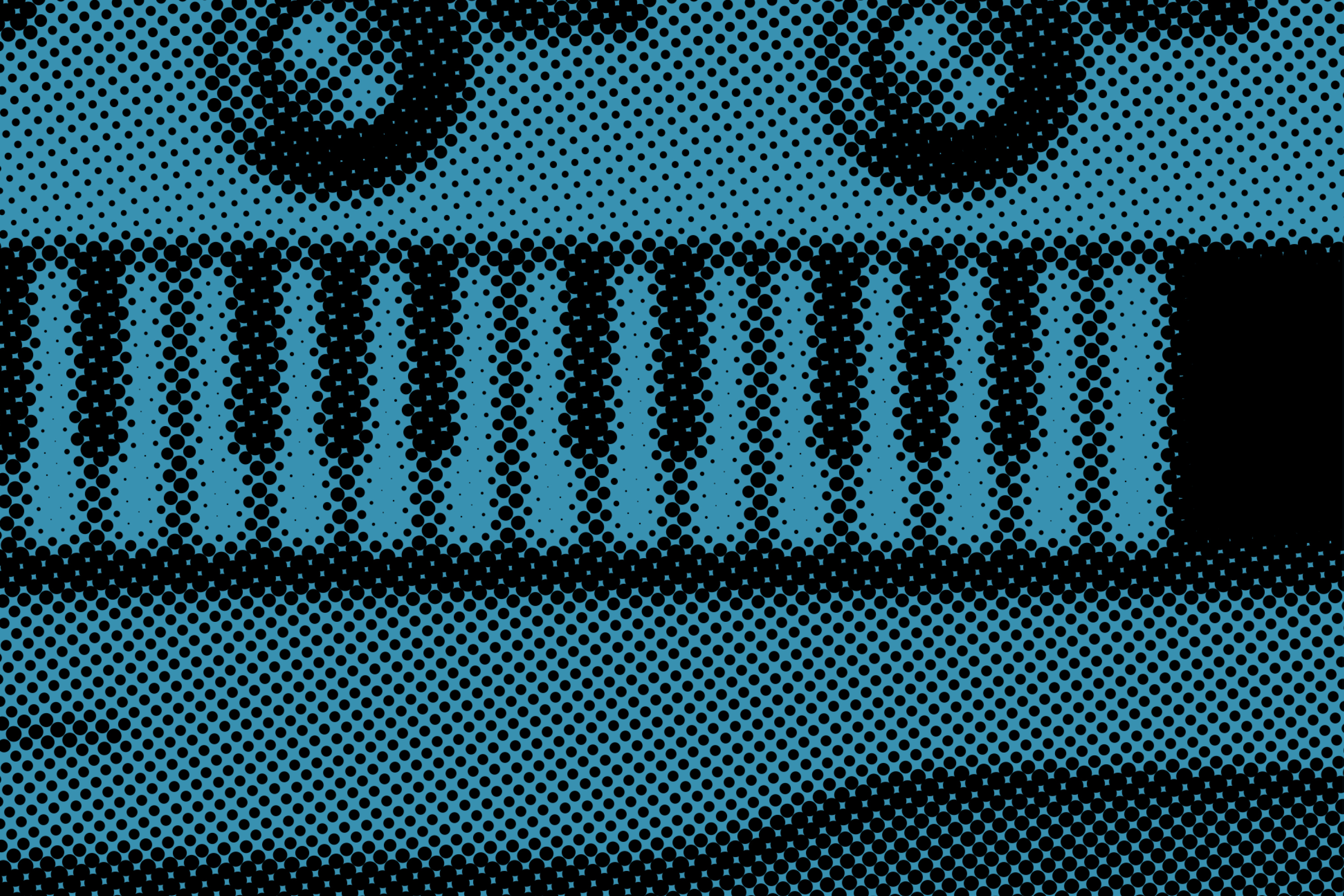Minimoog: The First Truly Portable Synthesizer
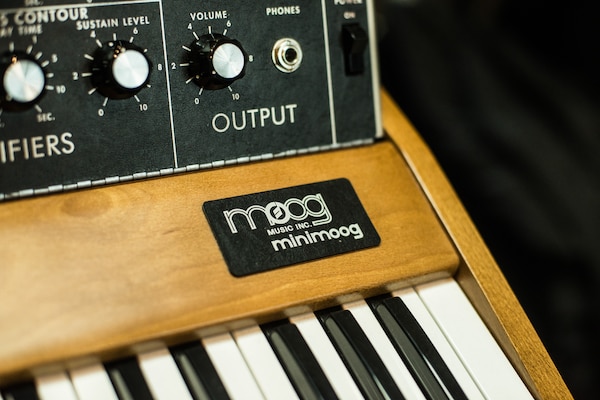
Manufactured when the Moog company was in dire financial straits, the Minimoog’s unique sound and design make it the ancestor of every modern portable synth
The hulking, mind-bogglingly complex Moog modular synthesizers that debuted in 1964 reshaped modern music by bringing electronic sounds to the masses. But they were totally inaccessible to the majority of artists – by 1970, only 28 Moog synths were owned by musicians. Most of Moog’s products resided in universities and the studios of large record labels, and were often used for research, corporate jingles or film soundtracks. It was almost unimaginable that synthesizers might soon become a fixture in a huge variety of genres, from pop to jazz to funk to prog rock. But a small group of engineers at a factory in the tiny town of Trumansburg, far upstate in New York, were about to change that. Completely by accident, they stumbled on an instrument that would change the course of musical history.
On these early modular synths – which were controlled by connecting parts of the device with different functions, via patch cables – finding sounds you liked was not easy. In the early days of these instruments, Bill Hemsath, an engineer at Robert Moog’s company, was often charged with demonstrating the confounding devices for the few musicians who might be considering buying one of the company’s earliest synths – an investment that would run them more than $50,000 in today’s money. “Hemsath found himself time and again demonstrating the same sorts of sounds and the same sorts of [modular] configurations,” says Trevor Pinch, a musician, professor at Cornell University and the author of Analog Days: The Invention and Impact of the Moog Synthesizer. Hemsath would sweat as a musician like the Doors’ Jim Morrison asked him to go back to a sound he’d heard a few minutes earlier. On these temperamental instruments, which often went out of tune due to heat or humidity, recreating a sound was difficult, if not impossible.
It really is the prototype, the ancestor, of every portable keyboard in every music shop today.
Hemsath began to wonder if a smaller instrument with preset sounds might be more useful to musicians who, like Morrison, were just interested in something that made (relatively) predictable noises. One day in 1969, Hemsath was working up in the Moog company’s attic. Nicknamed the “synthesizer graveyard,” the room was scattered with spare parts, half-broken synths and other bits and pieces that the company had tried to salvage. Without any concrete aim in mind, Hemsath began putting together a few parts. Then he found a keyboard. “He saw that the top part of the keyboard was missing all of the plastic key caps. But the bottom part had three octaves that were still intact. He just sawed it off and said, ‘Alright, I’ll use that,’” says Albert Glinsky, a composer and author of the book Theremin: Ether Music and Espionage, who is currently working on an authorized biography of Bob Moog. “[Hemsath] knew the engineering of the modulars very well, and he essentially reduced it down to a series of modules that were small and could all fit in a little cabinet on his desk,” Glinsky says. “He hardwired everything and took a lot of those typical patches [that musicians wanted] and made it possible for people to now recreate those with knobs on the front, which would be much more user-friendly.”
Hemsath called it the Min A, short for “mini.” But he didn’t think much of his new invention. When he showed it to his boss, Moog agreed that it was a fun experiment, but nothing more. “Nobody at the company – Bob Moog, the other engineers, the staff – nobody was thinking, ‘This is going to be the next big thing,’” says Glinsky. “It was just a hobby project that [Hemsath] threw together because he thought it might be fun.”
Over the next few months, Hemsath worked with engineers including Jim Scott and Chad Hunt to build several more models of the new instrument. These Min B models came encased in beautiful walnut – like all of the Moog synthesizers, they were meant to look like real instruments, not cheap plastic commodities. For the Min B, the engineers even created a small suitcase in which the machine could be carried. This was the first inkling of one of the Minimoog’s major selling points – its portability. Around February of 1970, Moog worked with Hemsath on another version, the Min C, and gave his employees permission to build a few more prototypes.
At about the same time, the company’s founder and namesake headed out on a road trip. Despite the cultural impact of his synthesizers and the incredible popularity of 1968’s Switched-On Bach, the synthesizer album by Wendy Carlos, the company was failing. No one was able to reproduce Carlos’s success, despite many efforts at similarly switched-on albums, including records with names like Switched On Santa and The Plastic Cow Goes Moooooog (a title clearly chosen by someone who didn’t know the proper pronunciation of “Moog”). Record companies began canceling their orders for these incredibly expensive machines. But Moog had already ordered the parts for the wave of orders they’d received in the wake of Switched-On Bach. Now they had a lot of expensive parts, and nothing to do with them. The Moog company needed to find a way to make money, fast. Moog set out to look for investors, leaving his engineers back in Trumansburg with their new portable synth.
Bob said, “If we do this, we’re going to do the Cadillac of small performance synthesizers.”
“[The engineers] were sitting around [at this time] and they were saying to themselves, ‘This is not good news. We’re going to be laid off anyway if we don't come up with something, and Bob is not working on developing any new products,’” Glinsky recounts. “So they said ‘Why don’t we manufacture that little toy?’” Without Bob Moog’s permission, his engineers began working on a plot to save the company, by making the Minimoog into a real product. “By the time Bob got back to the factory, probably a couple weeks later, they already had about half a dozen what they called Model D instruments, which they felt could be manufactured,” Glinsky continues.
Moog was not pleased. He brought the engineers into this office and excoriated them for taking production decisions into their own hands. The engineers left with their tails between their legs, but not long after, Moog came around to their point of view. Maybe the Model D could help save his company. He agreed to go ahead with production, on one condition. “Bob said, ‘OK, if we do this, we’re going to do the Cadillac of small performance synthesizers. I don’t want anybody cutting corners,’” remembers David Borden, one of the earliest musicians to play a modular synthesizer live. The course was set – the Minimoog was coming to market.
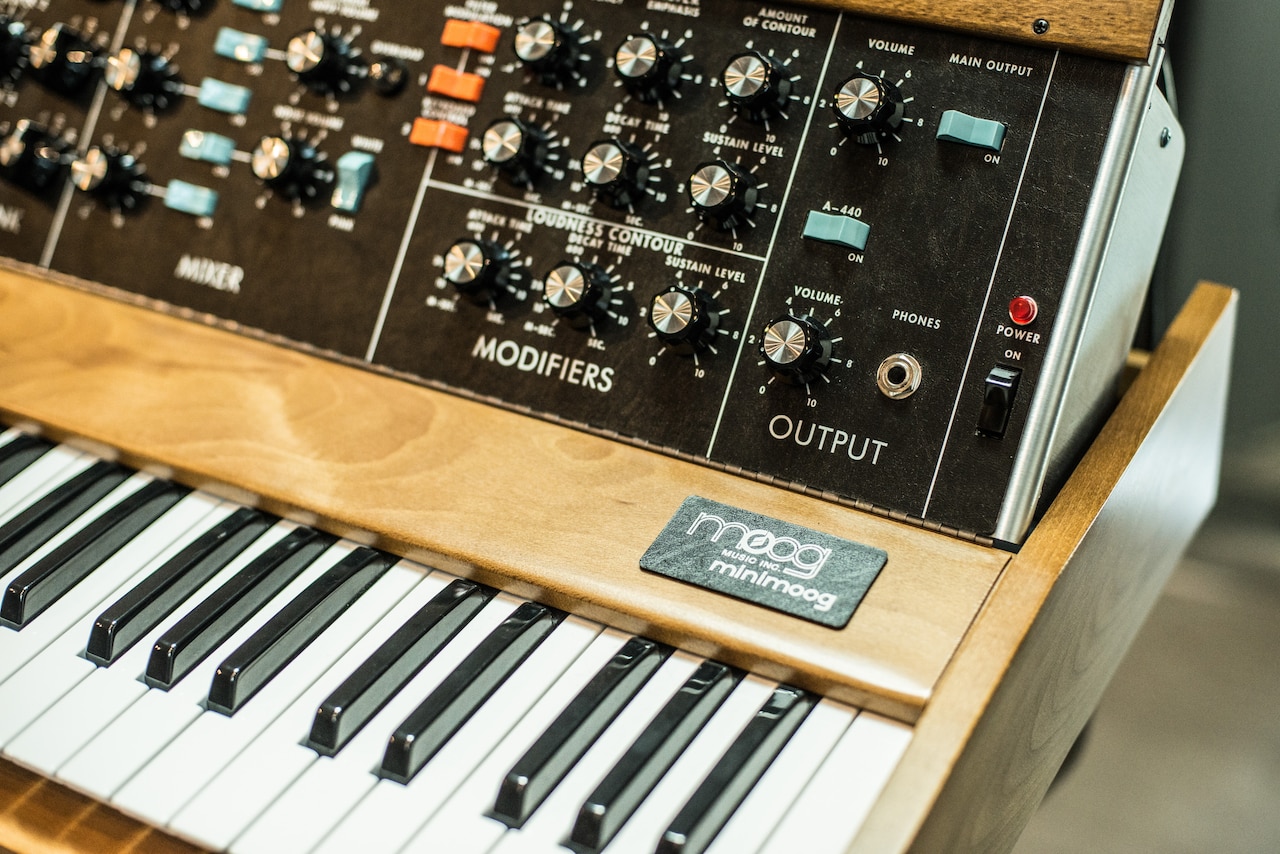
“Minimoog truly is the first portable synthesizer where everything is contained in one unit. It really is the prototype, the ancestor, of every portable keyboard in every music shop today,” Glinsky says. One of the things that made the Minimoog stand out, aside from the novelty of a portable synthesizer, was its unique sound. Like so much about the instrument, the sound of the Minimoog that made it famous was also partially a mistake. “The power supply never worked. It would never stabilize as [the engineers] wanted it to,” says Pinch. As a result, the instrument’s three oscillators wouldn’t stay in phase. The result, though, was “an incredibly warm, rich, beautiful sound. If they’d had a stabilized power supply the oscillators would’ve locked. It was a mistake in the design of the Minimoog that led to this incredible sonic quilt,” Pinch says.
The synth also debuted something called the pitch wheel. This little control would allow the player to bend their notes the way a guitarist or saxophonist could, sliding from one note to the next. Since the Minimoog was monophonic – meaning only one note could be played at a time – the pitch wheel greatly enhanced its ability for artistic expression, and gave musicians the control to perform expressive solos. Almost every other portable synth to come after the Minimoog employed a similar control. “If [Bob] had patented [the pitch wheel], he would have been an extremely wealthy man,” says Borden.
Still, introducing the concept of the portable synth to the world wasn’t easy. To do so, Moog relied on eccentric engineer and musicologist David Van Koevering. Van Koevering would do whatever it took to get synthesizers in the public eye and into record stores. He loaded up his Cadillac with Minimoogs and set off across the country to sell them, lending them to rock musicians for sets and talking to music store owners. He also leveraged a friendship with Glen Bell, the founder of Taco Bell, who allowed Van Koevering to take up residence in a round building on a private island Bell purchased in Florida. Van Koevering turned this opportunity into an event he called the Island of Electronicus, a pseudo-psychedelic experience that brought counterculture (minus the drugs) to straight families and connected it with the sound of the Minimoog. Thanks to Van Koevering’s efforts, Minimoogs began to appear in record stores, and caught the attention of young musicians.
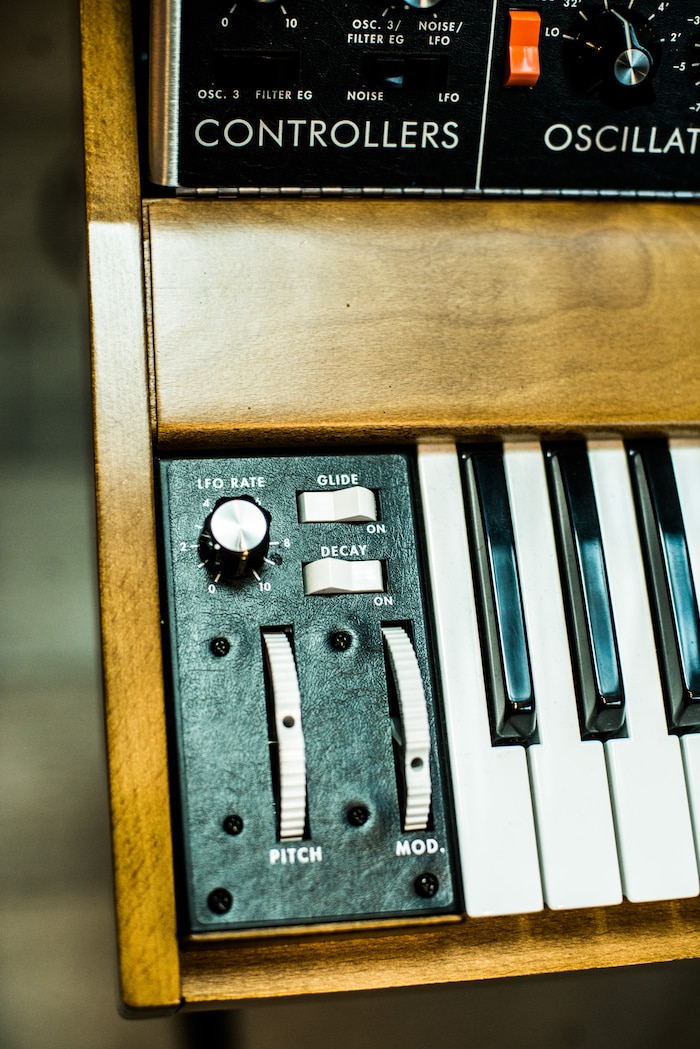
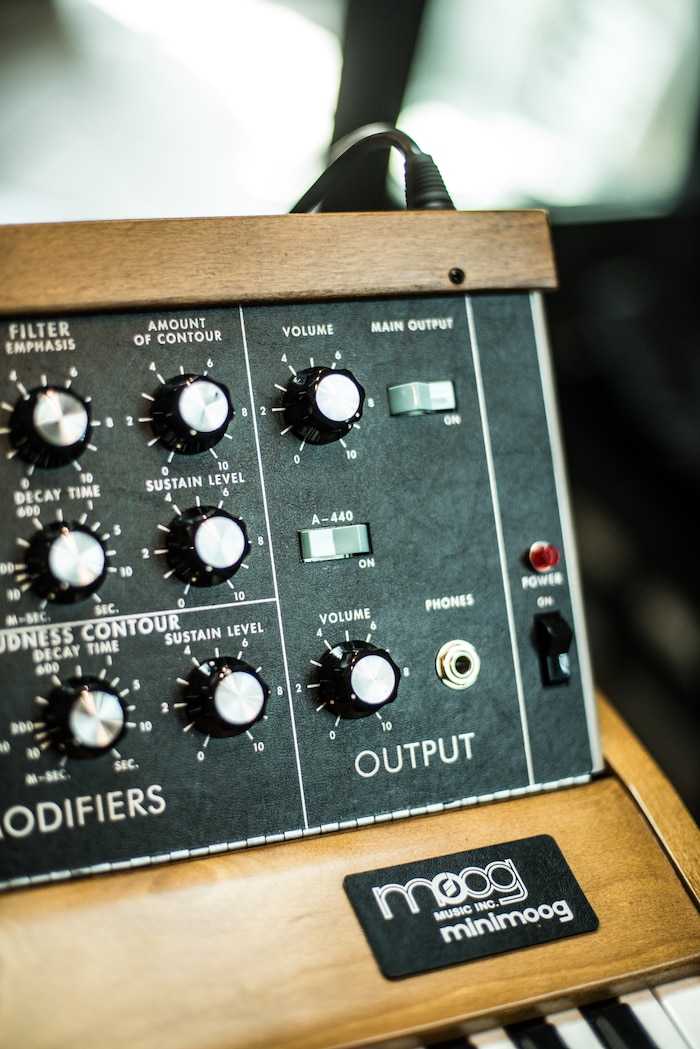
As musicians caught onto the possibilities of this exciting new instrument, the dynamics of rock bands began to change. For the first time, the keyboardist in a band could compete with the lead guitarist for sonic dominance. “[The Minimoog] does a very cutting melody sound, which lets you compete with the guitar player, and it does a very heavy squelchy bass sound, which lets you compete with any bass guitarist in the world. In fact, it’s funkier than most bass guitarists,” says Mark Jenkins, a British musician and author of the book Analog Synthesizers. The funkiness of the Minimoog meant that many bands used it in place of a bass guitar; a famous example is Parliament’s “Flashlight.” Live, however, many of these groups would enlist a bass player, obscuring their use of the Minimoog.
Jazz musicians were some of the first to accept the Minimoog as a useful new tool, and no one was faster on the pickup than the Afrofuturist free jazz musician Sun Ra. He visited the factory at Trumanburg early in the Minimoog’s evolution, and was allowed to borrow a Min B; his subsequent concerts were some of the first times the Minimoog was ever heard live. “Sun Ra had apparently done something to the instrument. I don’t know whether he dropped it or whether he was rough with it, or whether he had gotten inside the cabinet and altered something, but it was making all sorts of sounds that it wasn’t even supposed to be making,” says Glinsky. “There was all this inharmonic distortion all over the place, and the oscillators weren’t oscillating properly. Nothing was working well, but still the sound was fabulous.”
Sun Ra was also perhaps the first artist to ever record with a Minimoog, using his mutated Min B on his 1970 album My Brother The Wind. Other jazz artists, like Herbie Hancock, Dick Hyman and Chick Corea quickly ordered Minimoogs after the instrument’s official release, adding them to their arsenal. “The jazz solos that they delivered on a Minimoog were quite devastating,” says Jenkins. “Obviously they’re very fluid players, and it was an instrument which could really keep up with them in terms of speed of response and expression.”
By 1970 and ’71, some artists were beginning to put the Minimoog front and center. One of these was the British prog band Emerson, Lake & Palmer, in which keyboardist Keith Emerson played the lead melody on his Minimoog. Rick Wakeman, of the prog rock band Yes, took his use of the new instrument to an extreme. “[Wakeman would take] five Minimoogs on stage with him, each set to a different sound so he could just walk from one to another and play his different musical parts in the course of the evening, and nothing would ever go wrong,” says Jenkins.
Not long after the Minimoog took the dramatic, overdriven world of prog rock by storm, it made its way back towards the synthesizer’s roots, in electronic pop and experimental music. Probably the most well-known band to use the Minimoog for these purposes is the electronic group Kraftwerk, who used a Minimoog on their albums Autobahn and The Man-Machine. Other groups, including Tangerine Dream and Klaus Schulze, followed suit. Gary Numan, another well-known Minimoog player, loved the instrument as soon as he heard it. In the second half of the ’70s and early ’80s, the Minimoog made its way into emerging genres like disco – where it was used by pioneering artists like Giorgio Moroder and ABBA – along with hip-hop and house music.
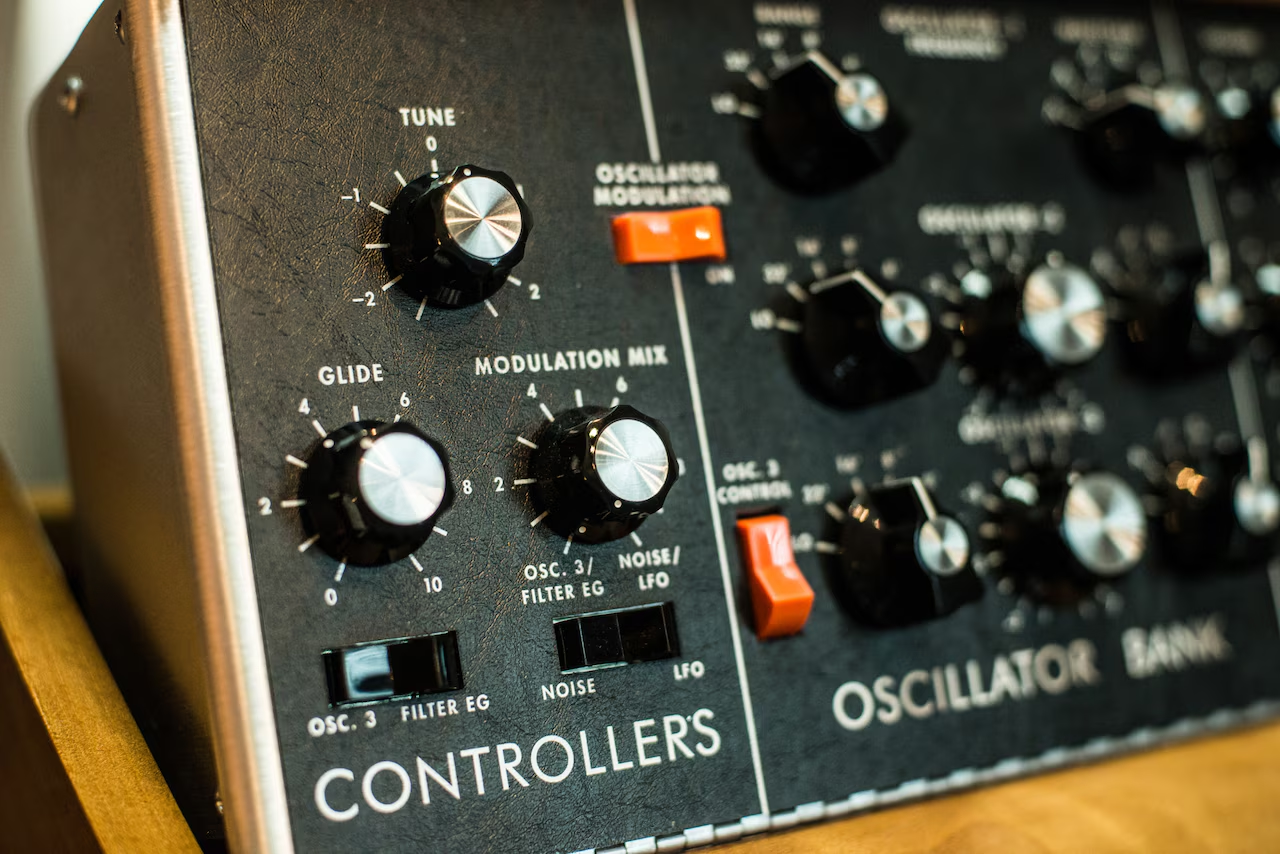
By the mid-’70s, the portable synth had cemented itself as a tool of musicians across genres, so it’s not surprising that other companies began to debut their own competing products. The closest competitor was the ARP Odyssey, which nearly outstripped the Minimoog in sales. Unlike the Minimoog, the ARP required patches, but it was limited to a similar number of sounds. But even as the ARP claimed marketshare from Moog, the Moog name remained synonymous with synthesizers. The ARP 2500 was used to make the iconic series of tones communicated by the aliens in Steven Spielberg’s 1977 film Close Encounters of the Third Kind, but in a publicity photo for the movie featuring the synthesizer, the caption misidentified the ARP as a Moog, ruining a great publicity opportunity for the company. ARP went out of business in 1981.
A few years after the Minimoog’s release, Japanese companies began getting into the synth game, producing products that did much of what the Minimoog could do for a fraction of the cost. The Yamaha DX7, introduced in 1983, dealt the first major blow to analog synthesizers. “[The DX7] was really the first viable, digital synth that you could buy in a music store. It used a technology that was previously not used in synthesizers called frequency modulation synthesis, or FM synthesis,” says Glinsky. This flexible instrument dramatically altered the landscape of synthesizer production. “When the Japanese entered the synth market, they started truly mass-producing in ways that American companies couldn’t compete with,” Glinsky says. “Just to give you an idea, [the DX7] sold 200,000 units in three years. The Minimoog, over its 11 years on the market, sold 12,000 units.”
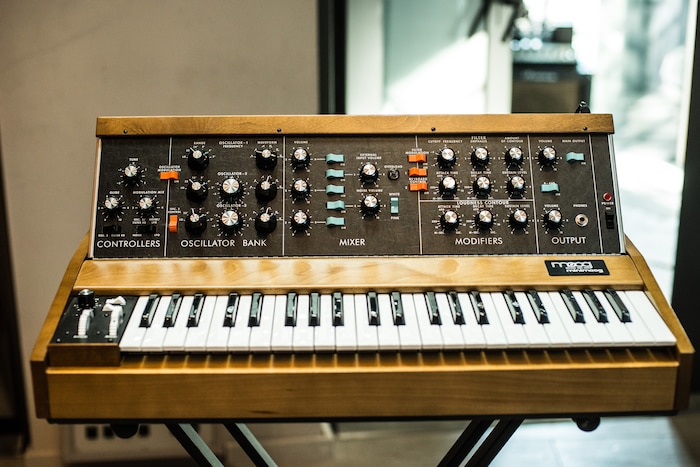
A lot of people feel that the Minimoog had a sound quality which has never been matched.
Even after the relatively massive success of the Minimoog, the financial situation at the Moog company remained dire. “[The company] went from about 42 employees at its height in 1969 to about six employees in 1970,” says Glinsky. In 1971, orders began pouring in for the Minimoog. But the company was totally broke, and couldn’t afford to buy all the parts they needed to fulfill these orders. Nor did they have the credit to secure a loan. So, in a bitter irony, Moog was forced to sell his company when he was finally on the brink of success. The company was sold to a venture capitalist named Bill Waytena, who struggled to rehabilitate it. “They moved into a former gelatin factory [in Williamsville, New York] which had been abandoned because the smell from the animal hides was all over the whole property and nobody wanted it,” says Glinsky. “They had no air conditioning in the summer. It was not a good situation for the employees. They were really struggling.” A few years later the company was sold again, this time to the instrument manufacturing company Norlin, who owned many companies and made Gibson guitars.
Bob Moog left the company he founded in 1977. In 1986, it declared bankruptcy, and it ceased operations in 1993. It wasn’t until 2002, three years before his death, that Bob Moog reacquired the rights to his own name and was able to restart the company, which now operates out of Asheville, North Carolina. After the dark decades prior to Bob Moog’s reacquiring of the brand, the Moog company returned to its roots in 2002 by releasing the Moog Voyager, an updated version of the Minimoog that was successful with modern musicians. In 2013, its production was discontinued after selling 14,000 units, more than the original Minimoog sold.
Still, the Minimoog’s impact continues to be felt. “A lot of people feel that the Minimoog had a sound quality which has never been matched,” says Jenkins. “The genuine analog Moog designs are still convincing people to part with their money.” Though today it’s possible to make nearly any sound using cheap software on a computer, analog synths still hold a mystique that few modern instruments can acquire. “The sound quality [of digital synthesizers] is getting better, but there's always something that doesn’t quite match the warmth of the analog synthesizers,” Borden says. “As Bob Moog used to say about the digital imitations – it was close, but no cigar.”
Header image © Kasia Zacharko
